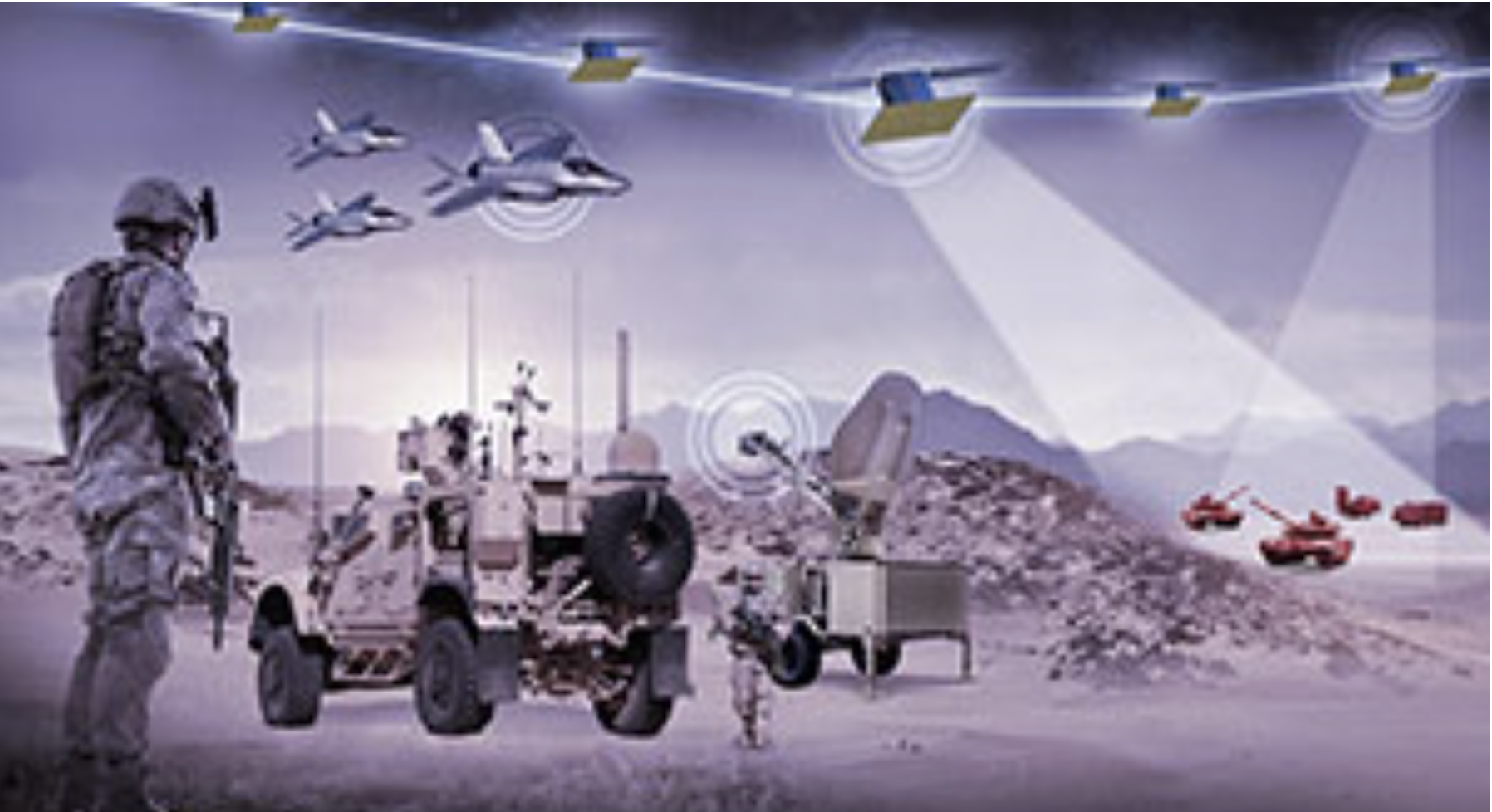
Space Force is considering how it might acquire space-based ISR data for battlefield needs. (Graphic: Lockheed Martin)
WASHINGTON — The Government Accountability Office has entered the swirling debate about the division of responsibility between the Space Force and the Intelligence Community for acquiring and disseminating space-based intelligence, surveillance and reconnaissance data — with a new report focused on commercial ISR acquisition, according to officials.
A classified version of the report was completed in July and provided to various Defense Department and IC agencies, and an unclassified version is due to be released within weeks pending DoD review, the officials said. Besides addressing IC roles and missions, the report also makes recommendations on how to speed ingestion of emerging capabilities.
“I’ve seen the GAO report, and I don’t think there’s anything groundbreaking” David Gauthier, the head of commercial operations for the National Geospatial-Intelligence Agency (NGA), said during a webinar Thursday sponsored by the Intelligence National Security Alliance (INSA). “From my recollection, the biggest recommendation is about clearly defining roles and responsibilities going forward. And that’s something we all know needs to be done.”
Gauthier, who also serves as the chair of the IC’s new(ish) Commercial Space Council, said the issue is how the newest military service, and its new National Space Intelligence Center (NSIC), will fit into current processes. Today, the National Reconnaissance Office (NRO) is responsible for acquiring remote sensing imagery from commercial satellite firms, as well as developing and building its own ISR satellites. The NGA, as the functional manger for geospatial intelligence, is responsible for disseminating space-based ISR imagery, data and analytic services, including that acquired from commercial firms, to government users.
Space Force leaders have made it clear that they see the service as having a key role as a provider of space-based ISR, including the acquisition of commercial imagery for what they call tactical ISR.
But what exactly is meant by “tactical ISR,” as opposed to “strategic ISR” which service leaders have conceded remains an IC mission, is itself an unanswered question.
“As an agency, we’ve been pretty clear that there really isn’t a material difference … between tactical ISR or strategic ISR. It’s just ISR. It’s taking pictures from space,” Pete Muend, NRO’s director of commercial operations, told the INSA webinar. “It all depends on the latency and characteristics of that imagery or dataset, and where it’s used, and how it’s used. Multiple platforms, multiple systems — be it government systems or commercial systems — can be used to support any number of those things.”
Gauthier noted that the Space Force and the IC already are “operating under guidelines today that we will not duplicate what anybody else is doing” and stressed that that approach will continue into the future.
Air Force Secretary Frank Kendall, who is responsible at the Pentagon for Space Force acquisition and budget, revealed earlier this month that he and NRO Director Chris Scolese have an “informal agreement” work cooperatively to address DoD’s ISR needs from space. Further, the IC agencies are participating in the ongoing Space Force review of DoD needs for space-based ISR, and an analysis of where there are gaps in fulfilling those needs.
“They are doing gap analysis to see if they have unique new mission requirements that are not accounted for in today’s construct,” Gauthier explained. “And if that’s the case, I think it opens a negotiation of ‘how do we now go solve those requirements?’ Is it something that the functional manager does and NRO procures? Or is it something we say, ‘You know, those are uniquely DoD things. And we have never done anything like that. Why don’t you go solve that independently?’ I think that is a completely open negotiation.”
The GAO report, like the Space Force gap analysis, will feed into that discussion, he added.
Gauthier and Muend both stressed that their agencies already work closely with DoD and the Space Force, including on issues related to commercial ISR.
For example, Gauthier said he will be visiting Space Systems Command (SSC) in Los Angeles the first week of September to “talk to them about their acquisitions versus our acquisitions and how we work together,” and that his team also met with SSC’s commercial “Front Door” program “just this week.”
So, I think we’re integrating pretty well in that. We’re having the working level conversations on a daily basis,” he added.
The Aug. 25 INSA webinar was moderated by Breaking Defense’s Theresa Hitchens.
Space Force EW unit working to integrate new weapon systems, intel personnel
The Space Force’s Delta 3 is responsible for organizing, training and equipping Guardians for electronic warfare missions involving satellite communications, as well as sustaining related offensive and defensive EW systems.


























